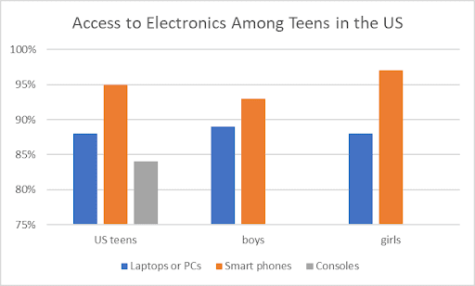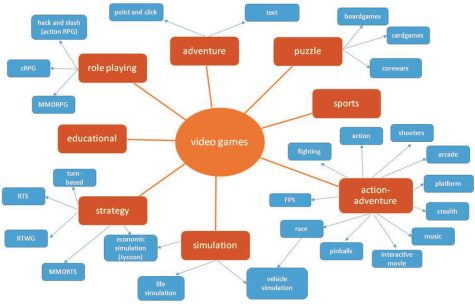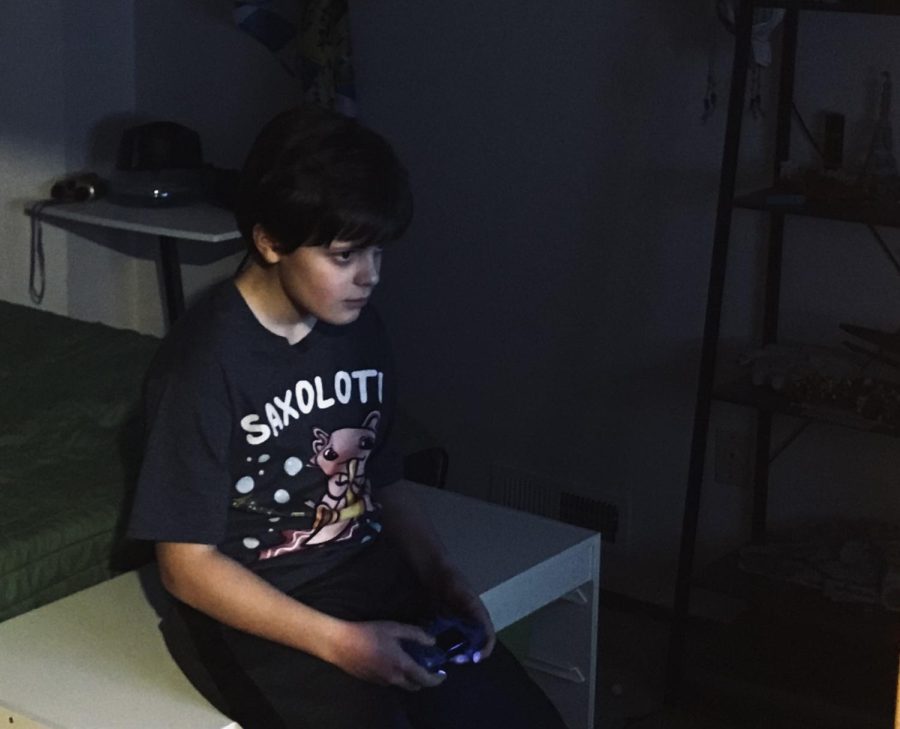As Video Games Have Spread Among the World, Addictions Followed Suit
Video game addiction has been described in the American Association’s Diagnostic and Statistical Manual of Mental Disorders also known as the DSM-5-TR. Which is used by mental health professionals to diagnose mental disorders.
Here is Garrett Hamilton playing video games on the PlayStation.
Video games have been gaining popularity and attention inside the United States since the 1970s. With the accessibility of games having gone from the arcades into the pockets and households of many people, this has caused the usage of these devices to go up, especially when it comes to gaming.
As of 2016 about 95% of teens have access to some sort of phone and 90% to a laptop, these show how available these devices are to teens.

With the majority of devices being able to connect to the internet, they allow practically anyone in the 21st century to download and play almost any game with minimal limitations.
As video games are a profit-oriented industry, game producers strive to create enjoyable experiences within their games that appeal to many types of gamers, trying to retain a person’s interest and attention towards their game.
In doing so, they design their game elements off of psychological mechanisms for example, obtaining a cool in-game reward at a percentile chance, making lower lows for the players but also making the highs of games much more memorable and rewarding. This model is used in many games including MMOs, RPGS, FPS, and practically every genre of gaming.

This plus the way someone looks towards games which could be that of daily distresses, family backgrounds, and other motives to play (e.g., escapism) all have a role in deciding whether or not gaming becomes problematic or harmless for an individual. “I get to just have fun, you know, I don’t need to worry about my obligations or anything I have to do. Usually, it is one of the rare times I get to enjoy myself,” said Diego Donato, a high school student at La Salle Green Hills in the Philippines.
The student president of LSGH stated “as long as you cut your day into the right amount of time, you can play video games as much as you want, just remember that there are responsibilities that we need to keep,” said Kyan Algalado.
About 63% of gamers (Casual Gamer: A Relaxed Person Playing For Fun – Dubsnatch) are on the more casual side of gaming, not spending extended amounts of time on a game, and taking breaks. Sometimes even using games as short breaks from their daily lives.
But something becomes an addiction “when it creates dependency and takes away from a person’s ability to function,” said Angela Lujan*, a specialist in licensed medical health.

Concerns have been brought up related to problematic gaming with about 13.8% of adults having the risk of Internet Gaming Disorder according to the DSM-5-TR’s criteria from an online survey which consisted of a sample of 3,041 adults (Distinguishing addiction and high engagement in the context of online game playing – ScienceDirect)
How do you know if someone has a gaming addiction? “So, they’re able to have daily functions like going to work,” said Lujan. “But there have definitely been times when they’re struggling more that they’ll choose not to go to work or stay all day. At home, on the video games and come home and forget about their other obligations or tasks because of games.”
The recognition of video game addiction doesn’t just stop inside the United States either. As the World Health Organization’s inclusion in the ICD-11 Gaming disorder (who.int) also known as international classification of diseases, defining the addiction as a pattern of gaming behavior characterized by uncontrolled urges to play games, priority of gaming over personal responsibilities, and the continuation to play video games even if the negative consequences over weigh the positives.
In 2010, A South Korean couple’s real-life daughter died of malnutrition while they played at a 24-hour gaming cafe, the video game Prius Online, a 3-D fantasy game where players raise an Online Girl (Couple: Internet gaming addiction led to baby’s death – CNN.com).
Another case happened just last year where a video game addict killed his mother, one brother, and two sisters after losing in the first-person shooter, Player unknown battlegrounds. With police saying, ‘he had developed psychological issues because of his extended hours of playing the game. Boy, 17, kills mum, brother and two sisters ‘after becoming addicted to video game’ | The US Sun (the-sun.com)
These are all quite drastic cases of video game addiction, leading some to believe “the whole world would be better off without video games,” said Garrett Hamilton.
But video games can have positive effects on their players; Improving hand eye coordination (Do Video Games Actually Improve Hand-Eye Coordination? – Vision Works (vision-works.co.za) ,problem solving and logic, quick analysis The Impact of Video Games | Sutter Health, and even improvements in mood.
Video games are not the problem, addiction is. There are addictions to practically everything someone could possibly think of, from foods, to games, and substances, etc. Knowing what leads to addiction and spreading that information to the general public helps, one person at a time.
*Angela Lujan is the parent of Cougar Chronicle staff member Andy Lujan.




